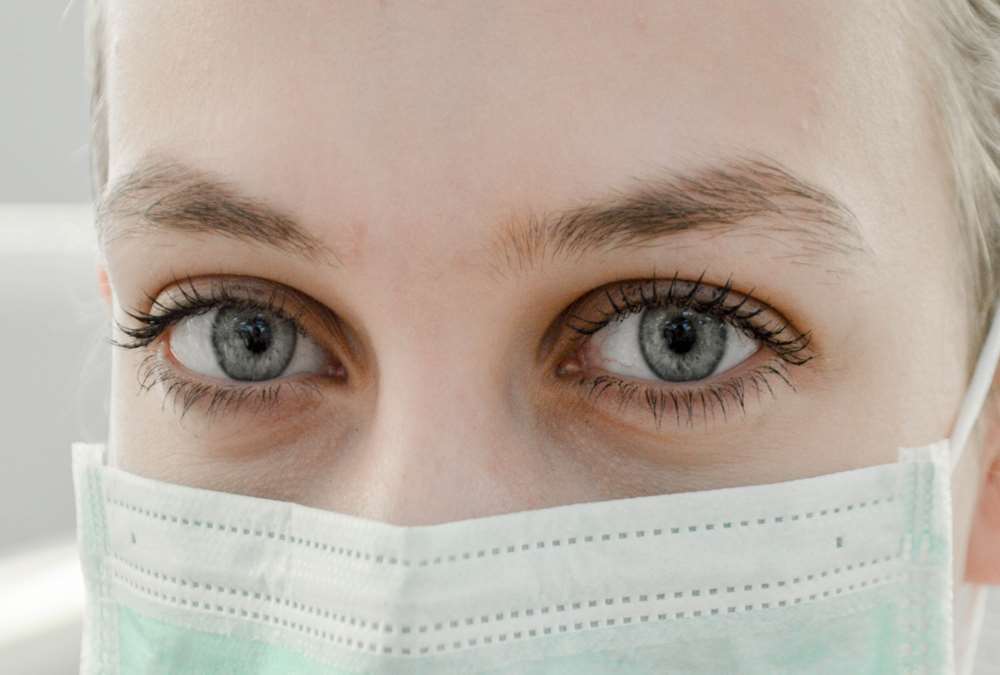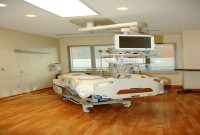- Home
- Business Processes
- Industry Knowledge
- Aerospace Industry
- Automotive Industry
- Banking Domain
- BFSI Industry
- Consumer/ FMCG Industry
- Chemicals Industry
- Engineering & Construction
- Energy Industry
- Education Domain
- Finance Domain
- Hospitality Domain
- Healthcare Industry
- Insurance Domain
- Retail Industry
- Travel and Tourism Domain
- Telecom Industry
- Leadership Skills
- eLearning
- Home
- Industry Knowledge
- Healthcare Industry
- Psychiatric Hospitals
Psychiatric Hospitals
This article provides insightful industry analysis and research into the psychiatric hospital industry. This article discusses the definition, key industry products, and activities along with major industry trends. Understand the revenue model, a brief history of trends during the current century, and key challenges currently being faced by the psychiatric hospital industry.
What is the Psychiatric Hospitals Industry?
Psychiatric hospitals, also known as mental hospitals, are hospitals specializing in the treatment of serious mental disorders. This industry includes establishments licensed to provide diagnostic, medical treatment, and monitoring services for inpatients who suffer from mental illness or substance abuse disorders. Psychiatric hospitals fall into one of two categories: nonprofit or for-profit. Nonprofit entities include government-administered facilities and charitable institutions. Psychiatric hospitals are primarily inpatient, acute care units. A growing public awareness of mental disorders has led to a significant increase in the number of these establishments and in the range of services they provided. These establishments maintain inpatient beds and a staff of physicians.
Major companies include CRC Health and The Betty Ford Center in the US, the Centre for Addiction and Mental Health in Canada, and the Crossroads Centre in Antigua (founded by Eric Clapton).
Types of Psychiatric Hospitals:
There are a number of different types of modern psychiatric hospitals dealing with people having mental illnesses of variable severity.
1. Crisis Stabilization:
The crisis stabilization unit is an emergency room for psychiatry, frequently dealing with suicidal, violent, or otherwise critical individuals.
2. Open Units:
Open units are psychiatric units that are not as secure as crisis stabilization units. The focus in these units is to make life as normal as possible for patients while continuing treatment to the point where they can be discharged.
3. Medium-Term Units:
These units provide care lasting several weeks. Most drugs used for psychiatric purposes take several weeks to take effect, and the main purpose of these hospitals is to monitor the patient for the first few weeks of therapy to ensure the treatment is effective.
4. Juvenile Wards:
Juvenile wards are sections of psychiatric hospitals or psychiatric wards set aside for children and/or adolescents with mental illness.
5. Long-Term Care Facilities:
These modern units have the goal of treatment and rehabilitation back into society within a short time-frame (two or three years). These hospitals provide stabilization and rehabilitation for those who are having difficulties such as depression, eating disorders, mental disorders, and so on.
6. Halfway Houses:
Another type of institution for the mentally ill is a community-based halfway house. These facilities provide assisted living for patients with mental illnesses for an extended period of time, and often aid in the transition to self-sufficiency.
7. Secure Units:
They are hospitals that undertake psychiatric assessments and can also provide treatment and accommodation in a safe, hospital environment where its patients can be prevented from harming themselves or others.
Psychiatric Hospitals Industry Products:
Psychiatric Hospitals industry deals in the following products:
- Recreational therapy
- Occupational therapy
- Education services
- Acute inpatient care
- Physical & speech therapy
- Geriatric care
- Adolescent care
- AIDS care
Psychiatric Hospitals Industry Activities:
Given below are the major activities performed by the psychiatric hospital's Industry:
- Inpatient medical treatment of mental illness
- Inpatient medical treatment of substance abuse
- Providing outpatient medical services
- Providing diagnostic X-ray services
- Providing clinical laboratory services
- Providing electroencephalograph services
Revenue Sources:
The primary source for revenue for this industry is patient care. Other sources of revenue include the management of health care programs for corporations and hospitals. Not-for-profit organizations also receive donations and private contributions. Outpatient facilities account for about 60 percent of industry revenue and residential facilities account for about 40 percent.
Background and Key Trends for Psychiatric Hospitals Industry:
The stigma of mental illness is a burden on service users and their families, and also prevents people from seeking help in the first instance. With the rise in the awareness of mental health, the traditional stigma associated with mental illness is constantly dropping resulting in industry demand. If we look at the key trends and developments during the last century, the industry got a boost in the 1920s due to significant developments in psychiatric medicine that lead to the understanding of connections between bacterial infection and brain functions and the development of techniques for treating neurosis symptoms and deep-seated psychoses.
Psychoanalysis helped the patients as psychoanalytical methods better-explained diseases and offered more cures. Psychoanalysis programs took years for patients to complete and were not suitable for most hospital settings and hence psychoanalysis began to take place mostly in doctors' offices and clinics.
In 1938 a neuro-psychiatrist in Italy began using electronic shocks for the treatment of many severe mental disorders. The psychosurgery technique was started to use in the 1930s for altering behavior and the first lobotomy was performed in 1935. In the 1950s, psychiatric hospitals began to use stimulants, tranquilizers, and vitamin therapies to treat patients. After 1970, the use of psychotherapy and drug treatment programs grew substantially, which shifted outpatient care to more group-oriented psychotherapy programs, either with family or other individuals. Modern psychiatric hospitals implemented specialized services for geriatric patients as well.
With the discovery of the AIDS virus in the mid-1980s, psychiatric hospitals have sought to meet the needs of the growing number of AIDS patients with special psychiatric ailments. There is an increasing level of common mental disorders, such as anxiety and depression. Communities began to deal with greater numbers of patients with significant mental disorders being served by community-based care. There is an increasing trend to avail services in the community and residential settings. In terms of future spending, it is estimated that because of changing patterns of morbidity (e.g. rise in depression and anxiety-related conditions); projected spending overall for services will rise massively. This industry will be driven by the availability of new drugs and treatments and funding policies of health care insurance programs.
Major Challenges facing the Psychiatric Hospitals Industry:
Given below are the key challenges for the psychiatric hospitals industry:
- Improvements in quality
- Improvements in user/patient experience
- Attracting physician referrals
- Developing the safety agenda- patient accidents/disruptive behavior & self-harming
- Understanding multiple regulatory and funding systems
- Expanding the array of services
- Expanding routine outpatient treatments
- Managing rising costs
- Managing employee costs
- Leveraging core operational and clinical competencies
Related Links
You May Also Like
-
Sectors of Healthcare Industry
The healthcare industry provides a variety of services to support the healthcare needs of a community or individuals. A universally agreed-upon classification of sectors does not exist, but the key sectors of the healthcare industry can be broadly classified into four sectors called 'Health care services and facilities', 'Medical devices, equipment, and hospital supplies manufacturers', Medical insurance, medical services and managed care' and 'Pharmaceuticals & Related Segments".
-
Overview of Healthcare Industry
The health care industry, or medical industry, is a sector that provides goods and services to treat patients with curative, preventive, rehabilitative, or palliative care. The modern health care sector is divided into many sub-sectors and depends on interdisciplinary teams of trained professionals and paraprofessionals to meet the health needs of individuals and populations. This article provides an overview of the medical industry.
-
This article provides insightful industry analysis and research into the In-Home Senior Care industry. This article discusses the definition, key industry products, and activities along with major industry trends. Understand the revenue model, a brief history of trends during the current century, and key challenges currently being faced by the In-Home Senior Care industry.
-
General Medical & Surgical Hospitals
This article provides insightful industry analysis and research into the general medical and surgical hospitals industry. This article contains the definition, key industry products, and activities and discusses in brief major industry trends.
-
Healthcare Systems – Public , Private and Mixed
This article explains the concept of health systems and their importance and funding practices. It helps the reader to understand public, private, and mixed health systems and their significance and roles in catering to any nation’s healthcare requirements.
-
This article provides insightful industry analysis and research into the psychiatric hospital industry. This article discusses the definition, key industry products, and activities along with major industry trends. Understand the revenue model, a brief history of trends during the current century, and key challenges currently being faced by the psychiatric hospital industry.
-
This article provides insightful industry analysis and research into the specialty hospital industry. This article discusses the definition, key industry products, and activities along with major industry trends. Understand the revenue model, a brief history of trends during the current century, and key challenges currently being faced by the specialty hospital industry.
-
Teaching or University Hospitals
This article provides insightful industry analysis and research into the teaching/university hospital industry. This article discusses the definition, key industry products, and activities along with major industry trends. Understand the revenue model, a brief history of trends during the current century, and key challenges currently being faced by the teaching hospital industry.
-
Emergency & Other Outpatient Care Centers
This article provides insightful industry analysis and research into the Emergency & Other Outpatient Care Centers industry. This article discusses the definition, key industry products, and activities along with major industry trends. Understand the revenue model, a brief history of trends during the current century, and key challenges currently being faced by the Emergency & Other Outpatient Care Centers industry.
-
History of Healthcare Industry
This article provides a short history of healthcare industry and discusses major world events that impacted and shaped the healthcare industry as it stands today. This article briefly traces global healthcare history from ancient times to the colonial era to the modern-day. This article also discusses various ideologies that have dictated the path of global health and set the trend towards globalization of the healthcare sector.
Explore Our Free Training Articles or
Sign Up to Start With Our eLearning Courses

About Us
Learning
© 2023 TechnoFunc, All Rights Reserved









